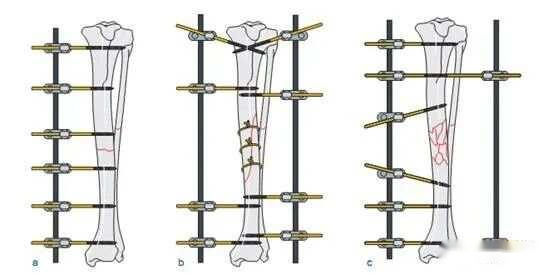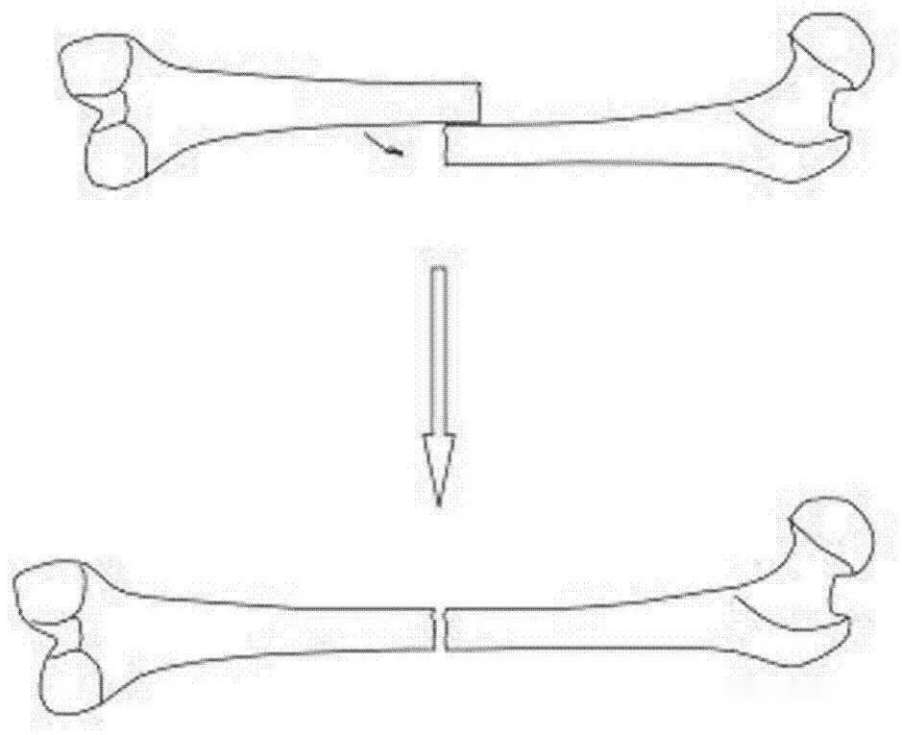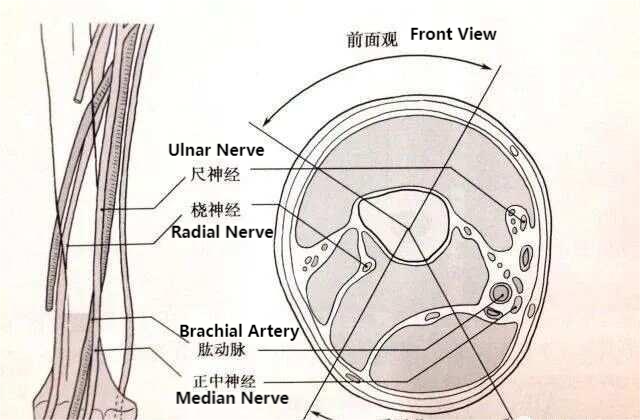Habka hawlgalka

(I) Suuxinta
Xannuunka plexus-ka Brachial plexus waxaa loo isticmaalaa addimada sare, epidural block ama block subarachnoid waxaa loo isticmaalaa lugaha hoose, suuxinta guud ama suuxdinta gudaha ayaa sidoo kale loo isticmaali karaa sida ugu habboon.
(II) Booska
Lugaha sare: dhabarka, suxulka oo laabta, cududda hore ee xabadka.
Lugaha hoose: dhabarka, laablaabashada sinta, afduubka, jilbaha jilbaha iyo kala-goysyada anqawga ee booska fidinta 90 darajo.
(III) Habka hawlgalka
Taxanaha gaarka ah ee hawlgalka qalabeeyaha dibadda waa beddelka dib-u-dejinta, dunta iyo hagaajinta.
[Habka]
Taasi waa, jabka marka hore ayaa dib loo dhigayaa ( hagaajinta isbeddellada wareegyada iyo isku dhejinta ), ka dibna lagu muday biinanka fog ee xariiqda jaban oo markii hore la hagaajiyay, ka dibna dib ayaa loo sii dhigayaa oo lagu mudaa biinanka oo u dhow xariiqda jabka, ugu dambeyntiina dib ayaa loo dhigayaa si ay ugu qanacdo jabka ka dibna la hagaajiyo gebi ahaanba. Xaaladaha gaarka ah qaarkood, jabka ayaa sidoo kale lagu hagaajin karaa si toos ah, iyo marka xaaladdu ogolaato, jabka dib ayaa loo dhigi karaa, la hagaajin karaa oo dib loo hagaajin karaa.
[Dhimista Jabka]
Yaraynta jabku waa qayb muhiim ah oo ka mid ah daaweynta jabka. Haddii jabka si ku qanacsan loo dhimay waxay saameyn toos ah ku leedahay tayada bogsashada jabka. Jabku waa la xidhi karaa ama wuxuu noqon karaa aragti toos ah iyadoo loo eegayo xaaladda gaarka ah. Waxa kale oo lagu hagaajin karaa iyadoo loo eegayo filimka raajada ka dib calaamadaynta dusha sare ee jirka. Hababka gaarka ah waa sida soo socota.
1. Aragtida tooska ah: Jabka furan ee leh darafyada jaban, jabka ayaa dib loo dejin karaa aragtida tooska ah ka dib markii si fiican loo nadiifiyo. Haddii jabka xiran uu ku guuldareysto khalkhalgelinta, jabka sidoo kale waa la dhimi karaa, la daloolin karaa oo lagu hagaajin karaa aragtida tooska ah ka dib jeex yar oo ah 3 ~ 5cm.
2. Habka dhimista xiran: marka hore ka dhig jabka qiyaas ahaan dib u habeyn ka dibna u shaqee si waafaqsan nidaamka, waxaad isticmaali kartaa birta birta ah ee u dhow xariiqda jabka, waxaadna mari kartaa habka qaadista iyo wiishka si aad u caawiso jabka in dib loo dajiyo ilaa uu ku qanco kadibna la hagaajiyo. Waxa kale oo suurtogal ah in la sameeyo hagaajin ku habboon barokaca yar yar ama xaglaha iyadoo loo eegayo raajada ka dib dhimista qiyaasta iyo hagaajinta ku salaysan dusha jidhka ama calaamadaha lafaha. Shuruudaha dhimista jabka, mabda'a ahaan, waa dhimista anatomical, laakiin jabka halista ah ee jaban, inta badan ma fududa in dib loo soo celiyo qaabka asalka ah ee anatomical, waqtigan jabku waa inuu ahaado xiriir wanaagsan oo u dhexeeya xannibaadda jabka, iyo in la ilaaliyo shuruudaha khadka xoogga wanaagsan.

[Pinning]
Pinning waa farsamada hawlgalka ugu weyn ee hagaajinta lafaha dibadda, iyo farsamada wanaagsan ama xun ee ku dhejinta ma aha oo kaliya inay saameynayso xasilloonida jabka jabka, laakiin sidoo kale waxay la xiriirtaa dhacdooyinka sare ama hooseeya ee isku-dhafka. Sidaa darteed, farsamooyinka qalliinka ee soo socda waa in si adag loo raaco marka la duubayo cirbadda.
1. Ka fogow dhaawaca dammaanadda ah: Si buuxda u faham anatomi ee goobta daloolinta oo iska ilaali in aad dhaawacdo xididdada dhiigga ee muhiimka ah iyo neerfaha.
2. Farsamada qalliinka adag ee aseptic, irbaddu waa inay ahaataa 2 ~ 3cm meel ka baxsan aagga dhaawaca.
3. Farsamo adag oo aan fiicneyn: marka la xidho irbad nus ah iyo irbad dhexroor qaro weyn leh, soo galitaanka iyo ka soo baxa irbadda birta oo leh mindi fiiqan si loo sameeyo 0.5 ~ 1cm maqaarka maqaarka; Markaad xidhato irbad badhkeed, isticmaal xoogaga dhiigbaxa si aad u kala saarto muruqa ka dibna u dhig cannula ka dibna daldaloolo. Ha isticmaalin daloolinta koronto xawaare sare leh marka aad qodid ama si toos ah u dunsanayso irbadda. Ka dib dunta cirbadda, kala-goysyada waa in la dhaqaajiyaa si loo hubiyo in ay jirto wax kacsanaan ah oo maqaarka ku jira irbadda, haddii ay jirto xiisad, maqaarka waa in la gooyaa oo la tolaa.
4. Si sax ah u dooro meesha iyo xagasha cirbadda: cirbaddu waa inaysan u gudbin muruqa sida ugu yar ee suurtogalka ah, ama cirbadda waa in la geliyo farqiga muruqa: marka cirbadda la geliyo hal diyaarad, masaafada u dhaxaysa cirbadaha qaybta jaban waa inaysan ka yarayn 6 cm; marka cirbadda la geliyo diyaarado badan, masaafada u dhaxaysa cirbadaha ee qaybta jaban waa inay ahaataa mid weyn oo suurtogal ah. Masaafada u dhaxaysa biinanka iyo xariiqda jaban ama dusha articular waa inaysan ka yarayn 2cm. Xagasha isgoysyada biinanka ee cirbadaha multiplanar waa inay ahaataa 25 ° ~ 80 ° biinanka buuxa iyo 60 ° ~ 80 ° biinanka nuska iyo biinanka buuxa.
5. Si sax ah u dooro nooca iyo dhexroorka irbadda birta.
6. Ku duub daloolka irbadda si siman faashad alkohol ah iyo faashad nadiif ah.

Meesha cirbadda gasha xumeral fog ee la xiriirta xirmada xididada xididada xididada cududda sare (Qaybta lagu muujiyey sawirka waa aagga badbaadada ee dunta irbadda.)
[Mounting and fixing]
Inta badan kiisaska dhimista jabka, dhejinta iyo hagaajinta si kale ayaa loo fuliyaa, hagaajintuna waa la dhammaystiraa sida loo baahdo marka biinanka birta ah ee hore loo go'aamiyay la dalooliyo. Jajabka xasilloon ayaa lagu hagaajiyaa cadaadis (laakiin xoogga cadaadiska waa inaysan noqon mid aad u weyn, haddii kale cillad xaglaha ah ayaa dhici doonta), jajabyada la gooyey ayaa lagu hagaajiyaa booska dhexdhexaadka ah, cilladaha lafaha ayaa lagu hagaajiyaa booska leexinta.
Habka hagaajinta guud waa in fiiro gaar ah loo yeesho arrimaha soo socda: 1.
1. Tijaabi xasilloonida hagaajinta: habku waa in la maareeyo wadajirka, sawirka dhererka ama riixida dambe ee dhamaadka jabka; dhamaadka jabka go'an ee xasiloon waa inuu lahaado wax dhaqdhaqaaq ah ama kaliya qadar yar oo waxqabad laastikada ah. Haddii xasilloonigu ku filnaado, tallaabooyin ku habboon ayaa la qaadi karaa si loo kordhiyo qallafsanaanta guud.
2. Fogaanta u jirta lafta hagaajinta dibadda ilaa maqaarka: 2 ~ 3cm xagga addinka sare, 3 ~ 5cm ee qaybta hoose, si looga hortago isku-buuqa maqaarka iyo fududaynta daaweynta dhaawacyada, marka bararku uu halis yahay ama dhaawacu weyn yahay, masaafada ayaa laga yaabaa in laga tago marxaladda hore, masaafadana waa la dhimi karaa ka dib marka bararku hoos u dhaco oo dhaawaca la hagaajiyo.
3. Marka uu weheliyo dhaawac halis ah oo jilicsan, qaybo ka mid ah ayaa lagu dari karaa si ay u noqdaan xubinta dhaawacantay mid laalaada ama korka, si loo fududeeyo bararka addimada loogana ilaaliyo dhaawaca cadaadiska.
4. Qalabka dibadda ee lafaha ee kaadirka lafaha waa in uusan saameyn ku yeelan jimicsiga shaqeynta ee kala-goysyada, qaybta hoose waa in ay sahlanaato in lagu socdo culeyska, qaybta sare waa in ay u fududaato hawl maalmeedka iyo is-daryeelka.
5. Dhammaadka cirbadda birta waxay soo bandhigi kartaa fiilada hagaajinta cirbadda birta ilaa 1cm, iyo dabada dheer ee cirbadda waa in la gooyaa. Dhamaadka cirbadda oo leh dabool dabool caag ah ama cajalad ku duuban, si aan maqaarka u daloolin ama aan maqaarka u jarin.
[Tallaabooyinka la qaadayo kiisaska gaarka ah]
Bukaannada qaba dhaawacyo badan, dhaawacyo halis ah ama nafta halis gelinaya inta lagu jiro dib u soo kicinta awgeed, iyo sidoo kale xaaladaha degdegga ah sida gargaarka degdegga ah ee goobta ama dhaawacyada dufcadaha, irbadda waa la isku dhejin karaa oo la sugi karaa marka hore, ka dibna dib loo saxo, la hagaajiyo, oo la sugo waqtiga ku habboon.
[Dhibaatooyinka Guud]
1. Infekshanka Pinhole; iyo
2. Cadaadiska maqaarka ee necrosis; iyo
3. Dhaawaca neerfaha
4. Daahitaanka bogsashada ama aan bogsanin jabka.
5. biinanka jaban
6. Burburka mareenka biinanka
7. Xumaan wadajirka ah
(IV) Daaweynta qalliinka kadib
Daaweynta saxda ah ee qalliinka kadib waxay si toos ah u saameyneysaa waxtarka daaweynta, haddii kale dhibaatooyinka sida caabuqa pinhole iyo mid la'aanta jabka ayaa dhici karta. Sidaa darteed, waa in fiiro gaar ah loo yeesho.
[daawaynta guud]
Qalitaanka ka dib, qaybta dhaawacantay waa in sare loo qaadaa, waxaana la arkaa wareegga dhiigga iyo bararka xubinta dhaawacantay; marka maqaarka lagu cadaadiyo qaybaha lafaha dibadda ee lafaha sababtoo ah booska ama bararka addinka, waa in wax laga qabtaa waqtigeeda. Kaashashka dabacsan waa in la adkeeyaa wakhtiga.
[Kahortagga iyo daweynta caabuqyada]
Lafaha dibadda laftiisa laftiisa, antibiyootiga lagama maarmaan ma aha si looga hortago caabuqa pinhole. Si kastaba ha ahaatee, jabka iyo nabarka laftiisa waa in weli lagu daaweeyaa antibiyootiko sida ugu habboon. Jabka furan, xitaa haddii nabarku si fiican loo nadiifiyo, antibiyootiga waa in la mariyaa 3 ilaa 7 maalmood, iyo jabka caabuqa waa in la siiyaa antibiyootik muddo dheer sida ugu habboon.
[Daryeelka Pinhole]
Shaqo badan ka dib hagaajinta lafaha dibadda ayaa loo baahan yahay si loo daryeelo godad si joogto ah. Daryeel aan fiicneyn ayaa keeni doonta caabuqa pinhole.
1. Guud ahaan dhaymada waxa la beddelaa hal mar maalinta 3aad ee qalliinka ka dib, waxaana loo baahan yahay in dhaymada la beddelo maalin kasta marka ay ka soo baxayso daloolka daloolka.
2. 10 maalmood ama ka badan, maqaarka pinhole waa fibros duuduuban, iyadoo la ilaalinayo maqaarka nadiif ah oo engegan, 1 ~ 2 maalmood kasta ee maqaarka pinhole dhibciyo 75% alkohol ama iodine fluoride xal noqon kartaa.
3. Marka ay jirto xiisad maqaarka ah oo ku yaal godka pinhole, dhinaca xiisadda waa in la gooyaa waqti si loo yareeyo xiisadda.
4. U fiirso qalliinka aseptic marka aad hagaajinayso hagaajinta lafta dibadda ama bedelida qaabeynta, oo jeermiska maqaarka ku wareegsan pinhole iyo irbadda birta si joogto ah.
5. Ka fogow infekshanka is-goysyada inta lagu jiro daryeelka pinhole.
6. Marka infekshanka pinhole uu dhaco, daawaynta saxda ah ee qaliinka waa in lagu sameeyaa waqtiga, iyo qaybta dhaawaca ah waa in kor loo qaadaa si loo nasto waana in la mariyaa dawooyinka lidka ku ah jeermiska.
[Jimicsi shaqeynaya]
Jimicsiga saxda ah ee waqtiga iyo saxda ah kaliya maaha mid ku haboon dib u soo kabashada shaqada wadajirka ah, laakiin sidoo kale dib u dhiska hemodynamics iyo kicinta cadaadiska si kor loogu qaado habka bogsashada jabka. Guud ahaan, foosha murqaha iyo dhaqdhaqaaqa wadajirka ah waxaa lagu samayn karaa sariirta 7 maalmood gudahood ka dib qaliinka. Lugaha sare waxa ay samayn karaan qanjaruufo iyo qabsashada gacmaha iyo dhaq-dhaqaaq iskeed ah ee cududda iyo kala-goysyada suxulada, waxaana la bilaabi karaa jimicsi wareeg ah 1 toddobaad ka dib; addimada hoose waxay qayb ahaan ka tagi karaan sariirta iyagoo gacan ka helaya uro ka dib 1 usbuuc ama ka dib marka nabarku bogsado, ka dibna si tartiib tartiib ah u bilaabaan socodka iyagoo miisaan buuxa leh 3 toddobaad ka dib. Waqtiga iyo qaabka jimicsiga shaqeyntu way kala duwan yihiin qof ilaa qof, badiyaa waxay kuxirantahay xaaladaha deegaanka iyo nidaamka. Inta lagu jiro habka jimicsiga, haddii pinhole uu u muuqdo casaan, barar, xanuun iyo calaamado kale oo barar ah waa in la joojiyo dhaqdhaqaaqa, kor u qaad qaybta ay saameysay sariirta.
[Ka saarida hagaajinta lafaha dibadda]
Qalabaynta dibadda waa in la saaraa marka jabku gaaro shuruudaha bukaan-socodka ee bogsashada jabka. Markaad ka saarto xayndaabka hagaajinta lafaha dibadda, xoogga bogsashada ee jabka waa in si sax ah loo go'aamiyaa, iyo hagaajinta lafaha dibadda waa in aan laga saarin si degdeg ah iyada oo aan la hubin in la go'aamiyo xoogga bogsashada ee lafaha iyo dhibaatooyinka muuqda ee hagaajinta lafaha dibadda, gaar ahaan marka lagu daaweynayo xaaladaha sida jabka duugga ah, jabka jaban, iyo lafaha lafaha.
Waqtiga boostada: Agoosto-29-2024










